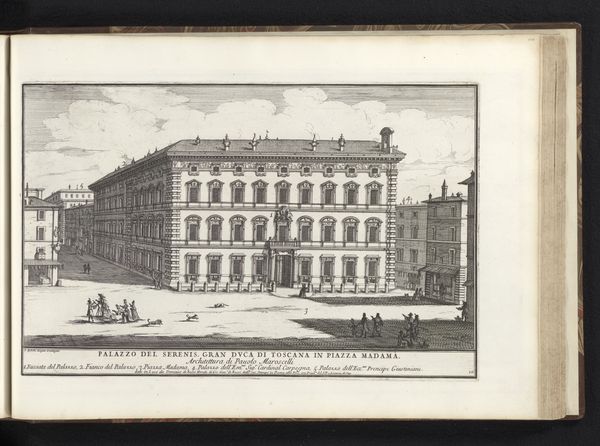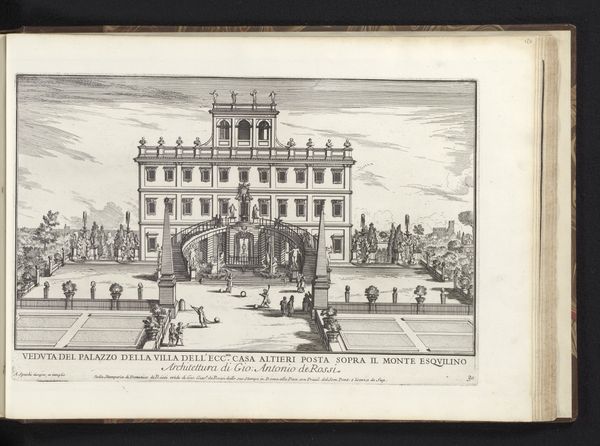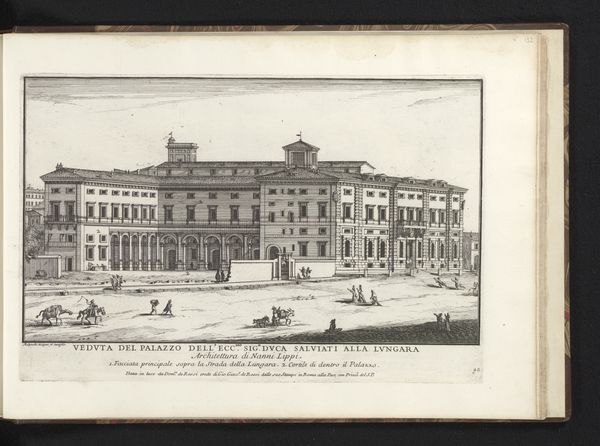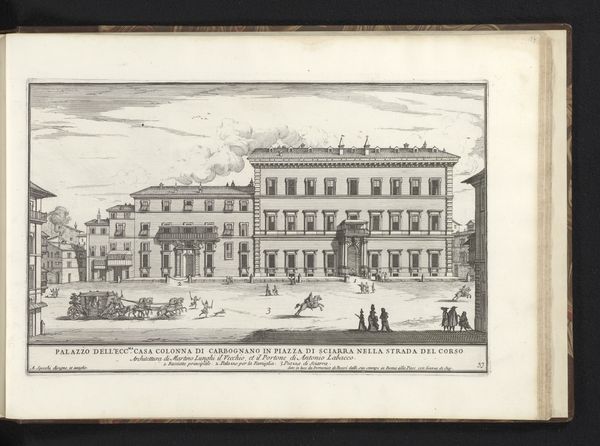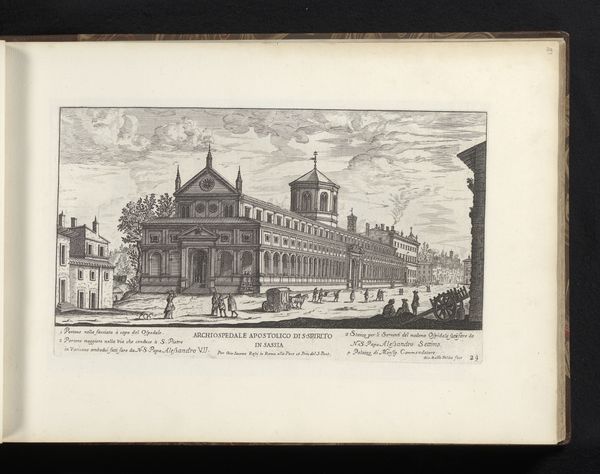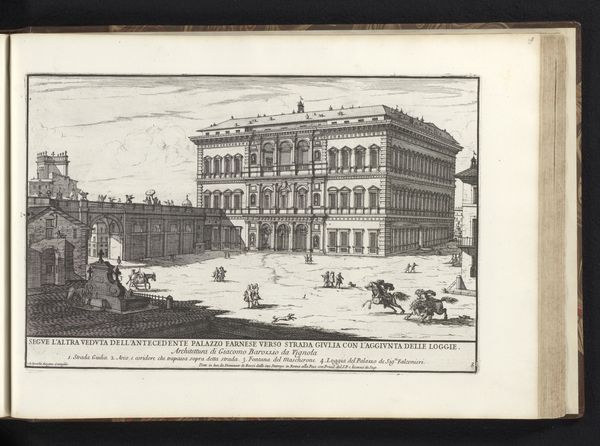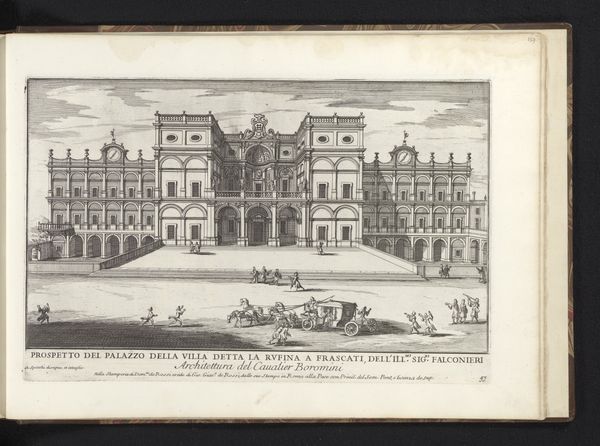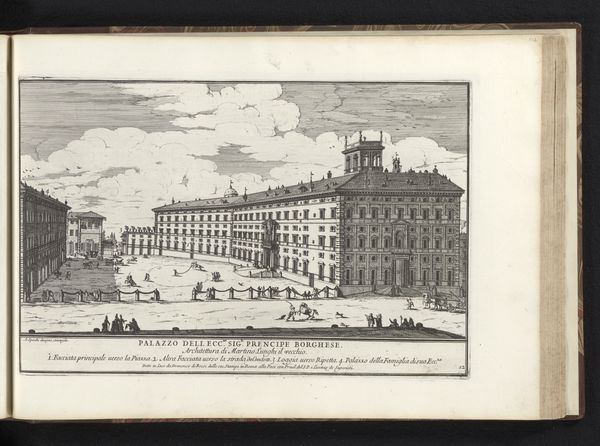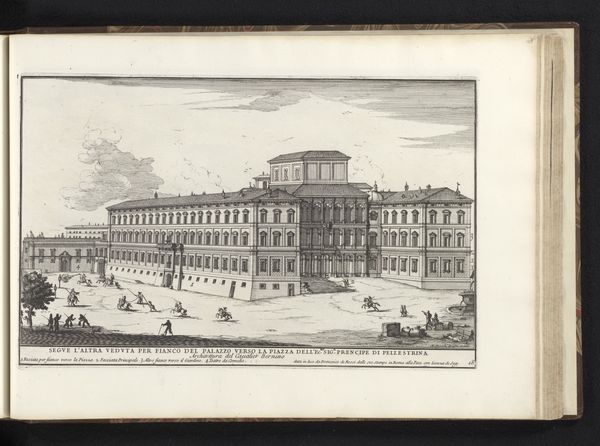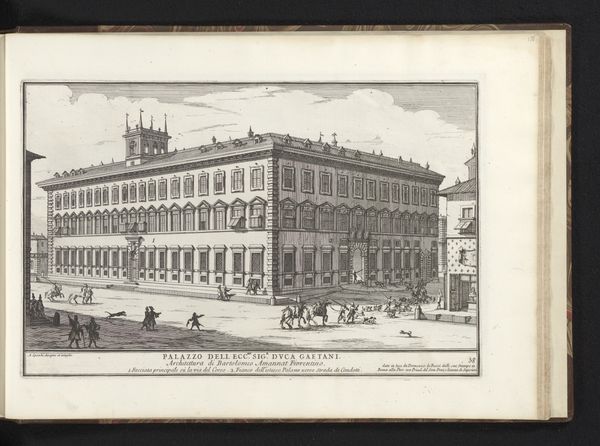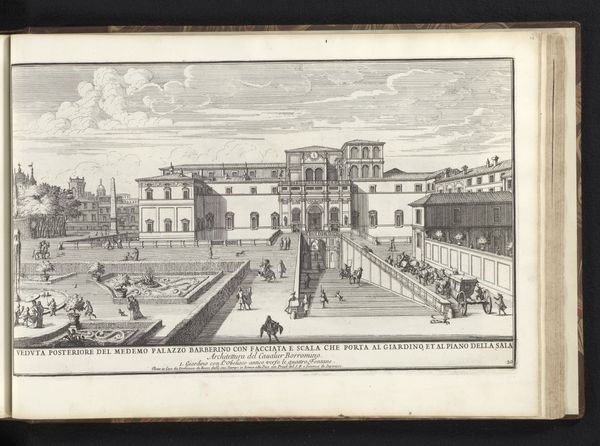
drawing, print, engraving, architecture
#
drawing
#
baroque
#
pen drawing
# print
#
landscape
#
form
#
line
#
cityscape
#
engraving
#
architecture
Dimensions: height 222 mm, width 333 mm
Copyright: Rijks Museum: Open Domain
Editor: This engraving, "Villa Doria Pamphilj te Rome," by Alessandro Specchi, made in 1699, feels like a stage set. There’s this almost exaggerated formality. What’s your take on how this kind of architectural depiction functions within its historical context? Curator: That’s a very insightful observation. How does this idealized representation relate to the power dynamics of the time? Consider the role of prints like this. They were essentially tools of propaganda. Specchi's precise lines present the Villa Doria Pamphilj as a symbol of the Pamphili family's wealth and power during the Baroque era. How might this image have shaped public perception of the family? Editor: So, it’s not just documentation; it’s actively constructing an image? It's interesting to think of it as a form of early public relations, shaping opinions and solidifying social hierarchies through visual means. But isn't that a lot to infer from one drawing? Curator: It’s a hypothesis informed by historical context. These images circulated widely. Consider who the likely viewers were – other wealthy families, potential allies, even rivals. The villa itself became a monument, and the image, a mobile advertisement for their status. Does the artwork invite or intimidate, based on visual elements, such as size and the depicted people in the gardens? Editor: Intimidate, probably. It does seem more about conveying authority than extending an invitation. The scale, the manicured landscape... it all feels very controlled. Curator: Exactly. Think of how these seemingly objective architectural renderings served a very specific socio-political purpose. It changes the way we understand art as something purely aesthetic. Editor: It does. I’ll definitely look at architectural prints differently now, thinking about who they were really for and what they were meant to communicate beyond just the building itself. Curator: And considering how the intersection between art and political narratives has echoed into modern day contexts.
Comments
No comments
Be the first to comment and join the conversation on the ultimate creative platform.
